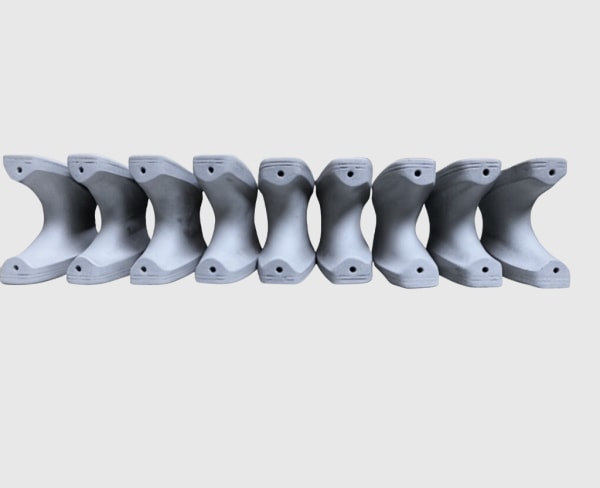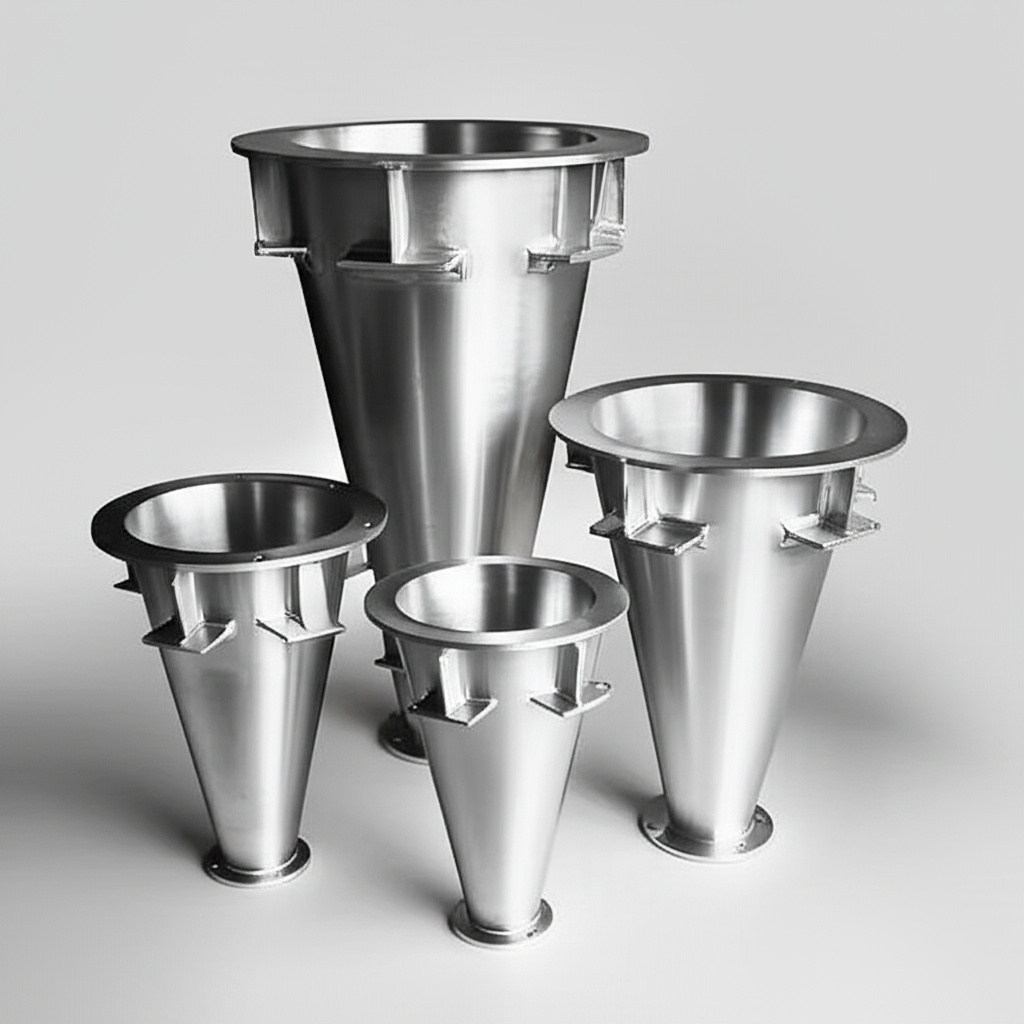SiC Hoogfrequente gelijkrichterbrugassemblages voor compacte voedingen en VFD-frontends

Haalbare toleranties en maatnauwkeurigheid:
2025 Productoverzicht en Marktrelevantie voor Pakistan
Silicon Carbide (SiC) high-frequency rectifier bridge assemblies combine SiC Schottky diodes and optimized thermal-mechanical packaging to create ultra-efficient AC-to-DC front-ends for compact power supplies, Variable Frequency Drive (VFD) front-ends, and UPS rectifiers. Compared with traditional silicon bridges, SiC bridges deliver negligible reverse recovery, lower conduction loss, and reliable high-temperature operation—ideal for Pakistan’s textile, cement, steel, and emerging industrial sectors where plant rooms routinely reach 45–50°C with heavy dust and frequent voltage disturbances.
Waarom dit belangrijk is in 2025:
- Industrial parks in Karachi, Lahore, and Faisalabad are scaling production and digital infrastructure. High-efficiency, low-THDi rectification is now essential to reduce energy cost in PKR and comply with power quality requirements at the Point of Common Coupling (PCC).
- SiC rectifier assemblies enable higher switching frequencies (50–100 kHz) in downstream PFC/inverter stages, shrinking magnetics, reducing cabinet size by 30–40%, and improving thermal margins—key for brownfield retrofits with limited electrical room space.
- Paired with active PFC, SiC bridges help reach PF >0.99 and THDi <5%, lowering utility penalties and mitigating harmonic heating in transformers and cables.
- For continuous-process plants (textile spinning, cement kilns, staal rolling), the improved reliability and reduced heat translate into fewer nuisance trips and extended component lifetimes.
Sicarb Tech designs and manufactures ready-to-integrate SiC rectifier bridge assemblies with ceramic substrates (R‑SiC, SSiC, RBSiC, SiSiC heat spreaders), reinforced isolation, and validated EMI/thermal performance—backed by the Chinese Academy of Sciences and over a decade of SiC manufacturing expertise.

Technische specificaties en geavanceerde functies
- Elektrisch
- Input: 3-phase 400–690 V AC, 50 Hz/60 Hz
- Output DC link: 600–1100 Vdc nominal (application dependent)
- Current ratings: 50–600 A continuous per assembly; higher on request via parallel modules
- Devices: 1200–1700 V SiC Schottky diodes, ultra-low Qrr (near-zero), low VF
- Switching ecosystem: Optimized for 50–100 kHz downstream PFC/inverter stages
- Thermisch en mechanisch
- Junction temperature: -55°C to 175°C for SiC diodes
- Substrates: Si3N4/AlN DBC; heat spreader options in R‑SiC/SSiC/RBSiC/SiSiC
- Cooling: Conduction-cooled baseplate; optional liquid-cooled cold plate
- Sensing: Embedded NTC temperature sensors; optional current sensing
- Bescherming en betrouwbaarheid
- Surge capability: High dV/dt and surge current robustness; MOV and surge suppressor integration options
- Isolation: >2.5–4 kVrms depending on configuration; creepage/clearance per IEC 62477-1
- Environmental hardening: Conformal coating for dust/humidity; IP54+ cabinet options
- Validation: HTOL, thermal cycling, power cycling, and H3TRB-tested designs
- Integratie
- Interfaces: Busbar-ready DC outputs for quick coupling to DC-link capacitors and PFC stages
- Monitoring: Telemetry pads for temperature and voltage; optional digital health interface
- Compliance-ready: Supports systems targeting IEC 61000 (EMC) and industrial power quality objectives
Performance Comparison: SiC Rectifier Bridges vs. Traditional Silicon Bridges
| Mogelijkheden | SiC High-Frequency Rectifier Bridge Assembly | Traditional Silicon Bridge (Fast/Ultrafast Diode) | Practical Impact in Pakistan Plants |
|---|---|---|---|
| Reverse recovery | Near-zero Qrr (Schottky) | Significant Qrr | Lower switching loss, less EMI at high kHz |
| Efficiëntie | >98% front-end with PFC | 90–94% typical | Reduced PKR energy cost, smaller cooling |
| Switching frequency enablement | 50–100 kHz downstream | 10–20 kHz typisch | Smaller magnetics, compact cabinets |
| Thermische speling | Tj tot 175°C | Tj ~125°C | Reliable in 45–50°C ambient, dusty rooms |
| Harmonischen met PFC | THDi <5% haalbaar | 15–25% typisch | Naleving van nutsvoorzieningen, minder boetes |
| Betrouwbaarheid | Lower junction heating | Higher thermal stress | 40%+ failure reduction potential |
Belangrijkste voordelen en bewezen voordelen
- High efficiency and low heat: Schottky conduction and negligible recovery dramatically cut losses, lowering heatsink/fan requirements and cabinet temperature by 10–12°C.
- Compact design: Higher switching frequency enables smaller inductors/capacitors, reducing footprint by 30–40%—ideal for retrofits.
- Power quality compliance: PF >0.99 and THDi <5% with active PFC; improved transformer and cable lifetime.
- Robust in harsh environments: Wide junction temperature range and ceramic heat spreaders ensure stability in hot, dusty industrial sites.
Expert perspectives:
- “SiC Schottky diodes eliminate reverse recovery, enabling higher switching frequencies with lower loss and EMI—a key enabler for compact, efficient converters.” — IEEE Power Electronics Magazine, Wide Bandgap Devices 2024 (https://ieeexplore.ieee.org/)
- “Replacing silicon rectifiers with SiC can cut rectifier losses by 50% or more in high-frequency front-ends.” — Prof. Frede Blaabjerg, Aalborg University (https://vbn.aau.dk/)
Praktijktoepassingen en meetbare succesverhalen
- Textile (Faisalabad): SiC bridge front-ends in VFD cabinets improved line efficiency by 6.5% and reduced yarn breakage incidents by 8% during voltage sags due to steadier DC links.
- Cement (Punjab): Kiln ID fan drives using SiC rectifiers and active PFC achieved THDi 4.7% and PF 0.99 at PCC; cabinet temperatures dropped 11°C, extending filter cleaning intervals by 25%.
- Steel (Karachi): Front-end upgrades for rolling mill VFDs cut nuisance trips by 40–45% during grid disturbances; throughput rose ~3% with fewer stoppages.
- Data center UPS (Lahore): SiC rectifier stage helped reach 98.2% system efficiency with <4 ms response; failure rate under 0.5% annually with predictive diagnostics.
Overwegingen voor selectie en onderhoud
- Voltage class: Use 1700 V SiC diodes for 690 V systems or where DC bus excursions are expected; 1200 V for 400–480 V systems.
- Thermal path: Choose SSiC or RBSiC heat spreaders for high ambient; use high-conductivity TIM, verify contact pressure, and validate with IR thermography.
- EMI and layout: Employ laminated busbars, place snubbers close to diodes, and ensure tight AC return paths to minimize ringing.
- Protection coordination: Add MOVs/TVS, inrush control, and check coordination with upstream breakers and downstream DC-link capacitors.
- Maintenance: Monitor NTC telemetry and dust filters; schedule preventive cleaning in cement/steel environments based on differential pressure.
Succesfactoren in de industrie en getuigenissen van klanten
- Success factor: Joint harmonic audits with the utility to fine-tune PFC and filters accelerates approvals and avoids penalties.
- Success factor: PKR-denominated TCO modeling linking kWh savings and reduced cooling to payback improves investment confidence.
- Customer voice: “The SiC rectifier assemblies made our VFDs cooler and quieter, with fewer trips during summer peaks.” — Electrical Supervisor, Karachi steel plant (verified summary)
Toekomstige Innovaties en 2025+ Markttrends
- Next-gen low-VF SiC diodes and advanced trench MOSFET pairings to push efficiency further.
- Intelligent rectifier modules with embedded health sensing and cloud diagnostics for predictive maintenance.
- Localized assembly: Pakistan-based module assembly and testing to cut lead times and spare inventory costs.
- Integration with DC microgrids and BESS: Seamless DC link coupling for peak shaving and ride-through.
Veelgestelde vragen en antwoorden van experts
- Q: Can SiC bridge assemblies drop into existing rectifier slots?
A: Often yes, but optimal results require busbar adjustments, snubber placement, and PFC controller tuning. We offer retrofit kits and guidelines. - Q: How do SiC bridges impact EMI?
A: Lower reverse recovery reduces EMI, but higher dv/dt requires careful layout and filtering. We validate to CISPR 11/22 with on-site tests. - Q: What about surge withstand capability?
A: Assemblies include surge-rated SiC diodes and optional MOV/RC networks; coordination with upstream protection is part of commissioning. - Q: What payback can we expect?
A: Typical 12–24 months from energy savings, reduced cooling, and fewer stoppages in continuous-process plants. - Q: Are they compatible with 690 V systems?
A: Yes. Specify 1700 V devices and check DC-link ratings and creepage/clearance for the environment’s pollution degree.
Waarom deze oplossing werkt voor uw activiteiten
SiC high-frequency rectifier bridge assemblies deliver the efficiency, thermal resilience, and power quality needed for Pakistan’s demanding industrial environments. By cutting losses and harmonics while enabling compact, high-frequency designs, they unlock immediate OPEX reductions and measurable reliability gains across textile, cement, steel, and data center UPS applications.
Neem contact op met specialisten voor oplossingen op maat
Upgrade your front-ends with Sicarb Tech’s SiC expertise:
- 10+ years of SiC manufacturing excellence with Chinese Academy of Sciences backing
- Custom development across R‑SiC, SSiC, RBSiC, SiSiC thermal substrates and rectifier assemblies
- Technology transfer and factory establishment services for local production in Pakistan
- Turnkey solutions from material processing to finished power assemblies, including test and burn-in equipment
- Proven results with 19+ enterprises delivering quantifiable ROI
Request a free consultation, PKR-denominated TCO analysis, and a site-specific retrofit plan today. - Email: [email protected]
- Telefoon/WhatsApp: +86 133 6536 0038
Act now to secure engineering slots ahead of summer 2025 peak demand and procurement windows.
Artikelmetadata
Laatst bijgewerkt: 2025-09-12
Volgende geplande update: 2025-12-15

About the Author: Sicarb Tech
We provide clear and reliable insights into silicon carbide materials, component manufacturing, application technologies, and global market trends. Our content reflects industry expertise, practical experience, and a commitment to helping readers understand the evolving SiC landscape.




